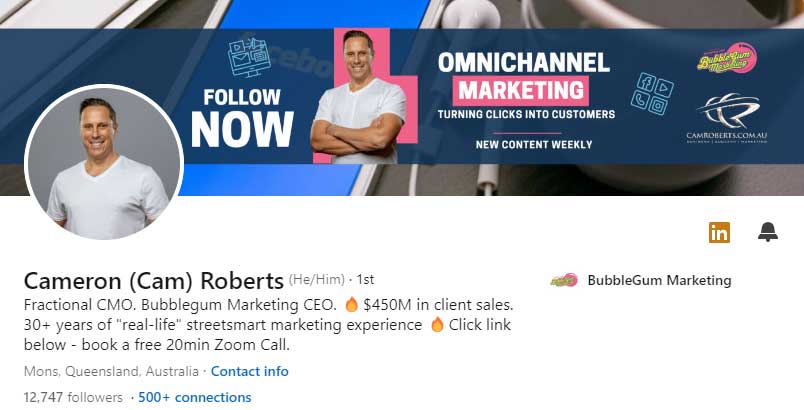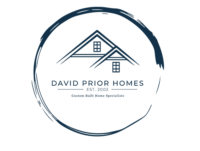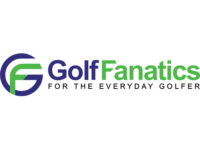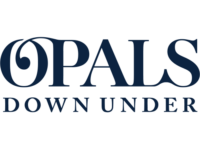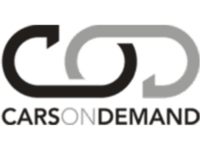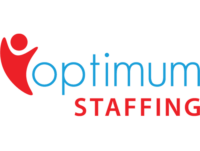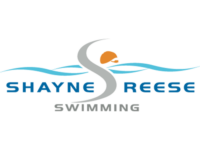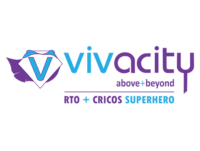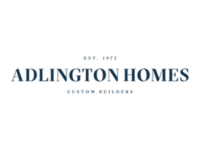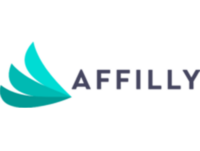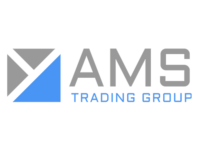How To Create A High-Converting Landing Page
By Cameron Roberts – Founder & CEO of Bubblegum Marketing,
Posted On January 17, 2024
In the ever-changing world of marketing, businesses are always trying to do everything possible and do well. Getting more leads and turning people who visit a website into loyal customers is a big goal. Alongside making great content and having a strong plan for showing up on search engines, making a really good landing page is crucial for getting more people to buy or sign up. Unlike a homepage that invites visitors to check out everything on a website, a landing page is created with one goal in mind, which is to get people to take action. These pages are usually made for a specific campaign and are designed to connect with the target audience, encouraging them to do something like buy a product or sign up for an email list.
Creating a good landing page involves a mix of good looks, convincing words, and a website that’s easy to use. In today’s fast-paced marketing world, knowing how to create these effective landing pages is super important for businesses that are trying to connect with their audience and do well online. In this blog post, we will explore the essential question: How do you create a high-converting landing page?
What is a Landing Page?
A landing page is a special webpage that is made to help people take action, such as signing up or buying something. When you click on a link from an email, social media post, or Google ad, it’s the page you end up on. These pages are usually created for one specific marketing effort and stay super focused. They are all about what your audience likes, and they usually have just one link so visitors don’t get distracted. The web design of landing pages uses elements like a good layout, forms to fill out, a free trial, and clear call to action (CTA) buttons to convince visitors to become customers. The goal is to guide them smoothly through the process of deciding whether to buy or sign up.
How to Create a High-Converting Landing Page
If you want to create a high-converting landing page, it’s essential to follow established principles and templates that have been proven to work. This approach can save you time and prevent you from going through a trial-and-error process. By focusing on the following critical components of a landing page, you can increase your chances of success and convert more leads into loyal customers.
1. Create A Headline That Highlights The Benefits
Seven out of every ten people usually leave the page without sticking around, so it’s important to make a landing page that really works. To prevent that, you need to show visitors what they will get from being on the page. The first thing they see is the headline, so it should be simple, direct, and interesting. Make sure it clearly tells them what’s good about your landing page and what they can get from it. The goal is to make it easy for them to understand and get interested so they don’t leave the page too quickly.
2. Select An Image That Represents The Service
When you are working on a landing page that you want lots of people to like and use, picking the right image is super important. The image you choose should match what your page is all about and make a connection with the people looking at it. It’s like a visual summary of what you are offering. So, the image needs to make sense, look good, and be easy for everyone to understand. A good picture can make your landing page more interesting and convincing, helping to turn visitors into fans of what you are offering.
3. Create Engaging And Persuasive Content
When you are creating a landing page, having a catchy headline and a good picture is great, but the words you use are just as important. Even if your headline and picture are cool, they might not have the impact you want without well-written words. The stuff you write on your page should be simple and clear, and it should help visitors know what to do next. Good content not only just describes things but also talks directly to the person reading it by using words such as “you” and “your” to get them involved.
4. Include A Distinct And Prominent Call To Action
Having a clear and noticeable call to action (CTA) is important for building a high-converting landing page. Certainly, the call to action (CTA) is a basic element that is essential in convincing visitors to take the desired action. To boost its effectiveness, ensure the CTA button stands out conspicuously, using a colour that sharply contrasts with other elements on the page. Use action verbs like “submit,” “download,” or “get it now” to make it clear to your audience what you want them to do. Clarity of instructions is important. Your landing page’s potential for conversion will be further increased by delving deeper into best practices for calls to action.
5. Provide A Relevant Offer
Consider your landing page as a first step in promoting your main product or service. The offer you provide is like a little gift in exchange for your visitor’s information. It has to be interesting enough for them to share their details and should make sense for your business. For example, “Top 8 ways to clean your carpets” might be a suitable offer if you are providing the service of carpet cleaning. It fits in naturally, as you will offer them to buy carpets later on because it’s related to what you are selling. Avoid offers that lead your visitors in a different direction, like talking about organic detergents when your main thing is carpets. Keep it on the same path for better results.
6. Request Only Necessary Information
When it comes to getting information from your leads, it’s good to be mindful of how much you are asking for. The amount should depend on things like how well they know your brand, where they are in the buying process, and how much they trust you. To make it easy for them to get started, keep it simple by asking for just what you need in the lead form. Most times, just asking for a name and email is enough to start the process of building a relationship with a new lead. So, by only asking for the necessary information, you are making it more comfortable for potential leads to take that first step.
7. Eliminate All Navigation Elements
When it comes to your landing page, the main job is to turn visitors into leads. So, it’s essential to keep things simple and focused. Any extra links, whether they lead to other pages on your site or elsewhere, can take attention away from this main goal. To make your page more effective, get rid of all those extra links and navigation elements. This way, your visitors can pay attention to what you want them to do without any distractions. Simplifying your page increases the chances of grabbing your visitors’ interest and getting them to take the action you want.
8. Make Your Page Responsive
Just like the other pages on your website, your landing pages need to work well on any device. It’s necessary that your page looks good and functions properly, especially on mobile. You wouldn’t want your form to disappear or be hard to use on smaller screens. Making your landing page responsive is all about giving every visitor a fair chance to sign up, no matter if they are using a computer, tablet, or phone. This way, you are making sure everyone can easily navigate and interact with your page, increasing the chances of more people signing up.
9. Enhance The Efficiency Of Your Forms
Even if your landing page is super interesting, long forms can make people hesitate to take action. Short and simple forms, without asking for unnecessary stuff, can increase the chances of people signing up or providing their information. When you are creating forms, just ask for the important stuff you need. For example, if it’s a newsletter signup, you don’t need to know where someone was born or their education level. Keep it easy by asking for their email and any other information that matters to your audience. Making forms short and user-friendly is key, so remember to only ask for what you need, use clear language, break long forms into smaller steps, show progress, make it look nice, and offer options like logging in with social media.
10. Improve The Loading Speed Of Your Page
Lastly, make sure your landing page opens up quickly after someone clicks on it. In a world where people’s attention doesn’t last long, how fast your page loads is super important to keep them interested. Studies even say that the chance of someone leaving your page goes up by 32% if it takes one to three seconds to load. To stop potential customers from leaving your page too soon, work on making it load faster.
Here are some simple tips to help:-
- Reduce the number of things your page needs to load
- Squash down the size of pictures and other stuff
- Use a content delivery network (CDN) to spread out your page stuff
- Let browsers save some of your pages to load faster next time
- Pick a hosting provider that’s quick and reliable.

What is a Good Conversion Rate?
Most websites usually have an average conversion rate between 2 to 5%, but this number can vary a lot depending on what business you are in, what your conversational goal is, and who the audience is that you are targeting. Regardless of the industry, a conversion rate of approximately 10% is considered a solid benchmark. Specifically, landing pages tend to have a conversion rate of about 9.7%, which is pretty good. These pages are great for getting people interested and turning them into potential customers. A high-converting landing page encourages site visitors to click the call-to-action button, facilitating the conversion of these visitors into potential leads that can be transformed into paying customers.
To figure out your landing page’s conversion rate, use the following formula:
Conversion Rate = (No. of Conversions / Total Visitors) x 100
Advantages of Landing Pages
Creating effective landing pages offers several advantages that can greatly benefit your business. Let’s break down these advantages in a simple and easy-to-understand manner:
1. Maximised Conversions: Well-crafted landing pages focus on a specific product or service, reducing distractions and guiding visitors towards a clear call to action. This streamlined approach significantly boosts the chances of converting visitors into customers.
2. Enhanced User Engagement: Landing pages are designed to capture and maintain user interest through compelling visuals, concise content, and a user-friendly layout. By engagingly presenting relevant information, landing pages encourage visitors to explore further and stay engaged with your brand.
3. Improved Advertising ROI: Great landing pages optimise the connection between ad content and the landing page experience. This alignment not only improves the user experience but also ensures that the advertising budget is effectively utilised, maximising the return on investment from your campaigns.
4. Clear Call-to-Action (CTA): A well-defined and persuasive call-to-action on a landing page prompts users to take specific actions, such as making a purchase, signing up for a newsletter, or downloading a resource. A compelling CTA is crucial for guiding visitors through the conversion funnel.
5. Building Trust and Credibility: Effective landing pages build trust by providing relevant and reliable information. Elements like customer testimonials, certifications, and transparent business practices showcased on landing pages contribute to establishing credibility and fostering a positive relationship with potential customers.
6. Optimised User Experience: Great landing pages prioritise user experience by ensuring fast loading times, mobile responsiveness, and intuitive navigation. A positive user experience not only satisfies visitors but also contributes to higher search engine rankings and an increased likelihood of repeat visits.
7. Data-Driven Insights: Landing pages serve as valuable sources of data and analytics. By analysing visitor behaviour, businesses can gain insights into what works and what doesn’t. This data-driven approach enables continuous improvement and optimisation of marketing strategies for better results.
8. Enhanced Brand Visibility: A visually appealing and well-designed landing page can contribute to a memorable first impression. Consistent branding elements, such as logos, colours, and messaging, help reinforce brand identity, leading to increased visibility and recognition in the minds of visitors.
9. Adaptable to Campaign Objectives: Landing pages can be customised to align with various campaign objectives, whether it’s promoting a new product, capturing leads, or driving event registrations. This adaptability makes landing pages versatile tools that can support different marketing goals.
10. Quick Lead Generation: The focused nature of landing pages allows for efficient lead generation. By presenting a specific offer or value proposition, landing pages can entice visitors to provide their contact information, facilitating quick and targeted lead generation for your business.
Types of High-Converting Landing Pages
Different landing pages serve various purposes based on where your visitor is in the buying process. Think of it as helping them take the next step, whether they are just checking things out, thinking about it, or ready to buy. Besides those, other types of pages come in handy for specific situations, like when someone can’t find a page or decides to say goodbye. Let’s look at some common landing pages:
1. Get Info Page: When you want visitors to share their details, like in the Software as a Service (SaaS) industry, a good landing page can ease their worries about privacy by linking to your data policy.
2. Buy Now Page: These pages are like online salespeople. They show off the benefits of a product and help convince visitors to buy. Customer testimonials can add a nice touch and make people more confident about their purchases.
3. Big News Page: Pages for big announcements, like special deals or discounts, work well to get people interested. Using them during holidays or special occasions can make them even more exciting and encourage visitors to check out more of what you offer.
4. Quick Info Page: These short pages are for specific tasks, like grabbing an email address when someone is about to leave. Keeping them simple and straight to the point increases the chances of getting what you need.
5. 404 Page: Nobody likes seeing a “Page Not Found” message, but you can turn it around. You can use jokes, funny pictures, or references to pop culture to entertain visitors and give them a way back to the homepage.
6. Recommendation Page: This page is for customers who really like your stuff. You can use it to offer them bonuses or discounts if they get their friends to join. It’s like turning your customers into your sales team.
7. Goodbye Page: Instead of feeling down about people leaving, see it as a chance to make things better. Ask them why they are leaving or try to win them back. It’s the last opportunity to keep them around or get some useful feedback.
8. Thank You Page: These pages are like a virtual high-five. After someone does something on your site, like filling out a form or making a purchase, a thank you page shows appreciation for their time and effort. It’s a way to make them feel valued.
Why Are Landing Page Conversions Important?
A landing page is a standalone web page that is designed to capture a visitor’s attention and encourage them to take a specific action, such as filling out a form or making a purchase. Landing pages are typically used in marketing strategies to drive traffic to a website and generate leads.
Landing page conversions are vital for several reasons in the realm of digital marketing. Essentially, these conversions represent the completion of a user’s journey, transforming a casual visitor into a valuable customer or lead. The effectiveness of a landing page lies in its ability to prompt specific actions, such as making a purchase, filling out a form, or subscribing to a newsletter.
Higher conversion rates not only contribute to increased revenue but also signify the success of your marketing efforts in capturing and retaining audience interest. Furthermore, optimised landing page conversions provide valuable insights into user behaviour, enabling businesses to refine their strategies and enhance the overall user experience.
Landing page conversions are a key metric in evaluating the success and efficiency of your online campaigns, playing a pivotal role in driving growth and achieving business objectives.
Conclusion
Creating a high-converting landing page that gets people to take action is super important for anyone trying to do well online. Just make sure your page clearly shows what you are offering, looks good, and is easy for visitors to use. Test how it’s doing regularly and make improvements based on what works best. A great landing page not only looks nice but also connects with visitors, builds trust, and helps guide them to do what you want. By keeping things simple, paying attention to what users like, and making changes based on feedback, you can make landing pages that not only grab attention but also lead to more people taking action. If you are seeking optimised web design for your online business, feel free to get in touch with Bubblegum Marketing for tailored services that elevate your online presence.
WANT TO BE OUR NEXT SUCCESS STORY?
Book a Free Consult
Schedule a 15-minute Free Consultation via Zoom meetings with our Director, Cam Roberts by clicking the button below now:
Recent Articles
- The Concept of Intent-First Funnels for Smarter Conversions
- Automated Funnel Strategies for 2025: What Still Works
- 5 Common Funnel Mistakes That Are Killing Your Conversions
- How AI Is Revolutionising CRM: What Every Marketer Needs to Know
- How Fractional CMO Services from a Marketing Agency Help You Grow Without Full-Time Costs
- How a Fractional CMO Can Transform Your Business Strategy
- How to Find the Perfect Target Audience for Facebook Ads
- How to Scale Facebook Ads Without Increasing Costs
- How E-commerce Brands Can Use Facebook Ads to Boost Sales
- How to Create a High-Converting Facebook Ad Campaign
Request A Quote
Request A Quote for your next Website or Funnel Project below:
